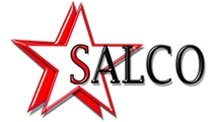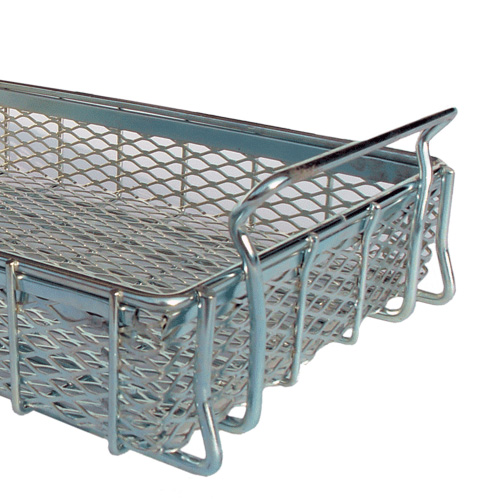In modern manufacturing, protecting steel components from corrosion and wear is critical to maintaining productivity and longevity. Zinc plating, also known as electroplating, is one of the most reliable and cost-effective surface treatments available. For industries that depend on custom wire baskets, racks, and industrial containers, zinc plating enhances product lifespan, performance, and cleanliness—all while providing superior resistance to rust and oxidation.
Whether used for parts washing, storage, or transport, zinc-plated steel baskets play a vital role in keeping manufacturing lines efficient and compliant with quality standards. In this article, we’ll explore what zinc plating is, how it works, its benefits, and why it’s an ideal finish for industrial wire and steel products.
What Is Zinc Plating?
Zinc plating is a surface finishing process that involves depositing a thin layer of zinc onto a steel or iron substrate through electrochemical means. During this process, an electric current passes through an electrolyte solution containing zinc ions, causing zinc metal to bond to the surface of the steel. The resulting coating serves as a sacrificial barrier, protecting the underlying material from environmental factors that cause corrosion.
There are several types of zinc plating methods, including barrel plating for small parts, rack plating for larger components, and continuous plating for wire or sheet material. The process is valued across manufacturing industries for its ability to create a uniform, corrosion-resistant finish without significantly altering the part’s dimensions—a key advantage for precision wire products and tight-tolerance assemblies.
Why Zinc Plating Is Ideal for Industrial Wire and Steel Components
Industrial baskets, trays, and racks are constantly exposed to moisture, heat, chemicals, and abrasive conditions. These environments accelerate rust formation and structural degradation if steel is left untreated. Zinc plating offers a cost-efficient solution by acting as a self-sacrificing layer that corrodes in place of the steel underneath.
Facilities that use zinc-plated baskets benefit from:
- Superior corrosion resistance in humid, chemical, or abrasive environments
- Extended service life for components exposed to part washing or storage conditions
- Enhanced durability for daily handling, transport, and staging operations
- Improved aesthetics, making it easier to identify and clean parts on the production floor
These features make zinc plating a go-to finishing choice for industries such as automotive manufacturing, aerospace, medical device production, and food processing—where cleanliness, durability, and precision are essential.
Corrosion Protection: How Zinc Acts as a Sacrificial Shield
One of zinc’s most powerful properties is its ability to serve as a sacrificial coating. When a zinc-plated basket or wire rack is exposed to oxygen and moisture, the zinc reacts first, forming a stable layer of zinc oxide and zinc carbonate. These compounds act as a physical seal, protecting the base steel from exposure.
Even if the coating becomes scratched or worn over time, the surrounding zinc continues to provide cathodic protection, preventing the exposed area from rusting. This self-healing quality makes zinc plating particularly valuable in manufacturing facilities where wire baskets experience friction, impact, or abrasion during regular use.
Durability in Industrial Wash and Handling Applications
Many facilities use industrial baskets to hold parts through high-pressure wash systems or ultrasonic cleaning processes. These environments expose steel to hot water, detergents, and caustic solutions that can quickly degrade untreated surfaces. Zinc plating provides a resilient, moisture-resistant layer that prevents oxidation and maintains structural integrity, even after hundreds of wash cycles.
In addition, post-treatments like chromate conversion coatings or clear sealants can be applied to zinc-plated surfaces to further enhance corrosion resistance and aesthetic appeal. This combination of protection and longevity makes zinc plating one of the most practical finishing solutions for parts washing and component handling systems.
Zinc Plating Compared to Other Finishes
When choosing a finish for wire products or industrial baskets, manufacturers often weigh zinc plating against alternatives like stainless steel, powder coating, or hot-dip galvanizing. Each method has unique benefits—but zinc plating offers the best balance of cost, protection, and precision for many applications.
Zinc Plating vs. Stainless Steel
Stainless steel naturally resists corrosion but comes at a higher raw material cost. For applications that don’t require full stainless fabrication, zinc plating delivers similar corrosion resistance at a fraction of the price—making it ideal for cost-sensitive production environments.
Zinc Plating vs. Powder Coating
Powder coating offers a durable surface finish and aesthetic appeal but can chip or wear off under frequent contact. Zinc plating, in contrast, forms a metallurgical bond with the base metal and continues to protect even after minor surface damage occurs.
Zinc Plating vs. Hot-Dip Galvanizing
Hot-dip galvanizing provides a thicker zinc coating for heavy-duty outdoor use, but it can reduce part precision and add unwanted bulk. Zinc plating achieves uniform coverage and tight dimensional control, which is essential for intricate wire assemblies and precision baskets.
Overall, zinc plating stands out for its balance of performance, economy, and adaptability to diverse industrial needs.
Common Applications for Zinc-Plated Steel Baskets and Wire Products
Zinc-plated components are widely used in industries that demand both structural strength and long-term corrosion resistance. Common applications include:
- Parts washing baskets for automotive or aerospace components
- Heat-treating trays and cooling baskets
- Material handling containers in production or assembly areas
- Wire storage systems for corrosion-sensitive parts
- Transport baskets used between machining or finishing stages
Because of their smooth finish, zinc-plated baskets are also easier to clean and inspect, reducing the risk of contamination in sensitive manufacturing operations.
Design and Fabrication Options from Salco Engineering
Salco Engineering & Manufacturing specializes in creating custom steel baskets and wire racks with zinc-plated finishes tailored to your exact specifications. Our in-house team handles every stage of production—from design and fabrication to surface finishing—ensuring consistent quality and performance.
We offer zinc-plated components designed for:
- Heavy-duty load capacities and industrial material handling
- Stackable and nestable configurations for space optimization
- Precision-formed wire baskets compatible with automation systems
- Integration with custom carts and trolleys for easy mobility across the factory floor
Every basket is engineered for maximum strength, reliability, and corrosion protection—ensuring that your equipment continues to perform efficiently in demanding conditions.
Enhancing Equipment Longevity with Zinc-Plated Protection
Zinc plating is more than a surface finish—it’s a strategic investment in the durability and reliability of your material handling systems. For manufacturers and industrial facilities seeking a cost-effective method to prevent rust and extend product life, zinc-plated steel baskets deliver proven results. They combine structural strength with corrosion resistance, offering long-term value without compromising on precision or performance.
At Salco Engineering, we help manufacturers enhance efficiency through expertly fabricated and finished products built to withstand the toughest environments. Contact us today to request a quote or discuss how our zinc-plated wire baskets and custom steel fabrication services can improve your operations.



